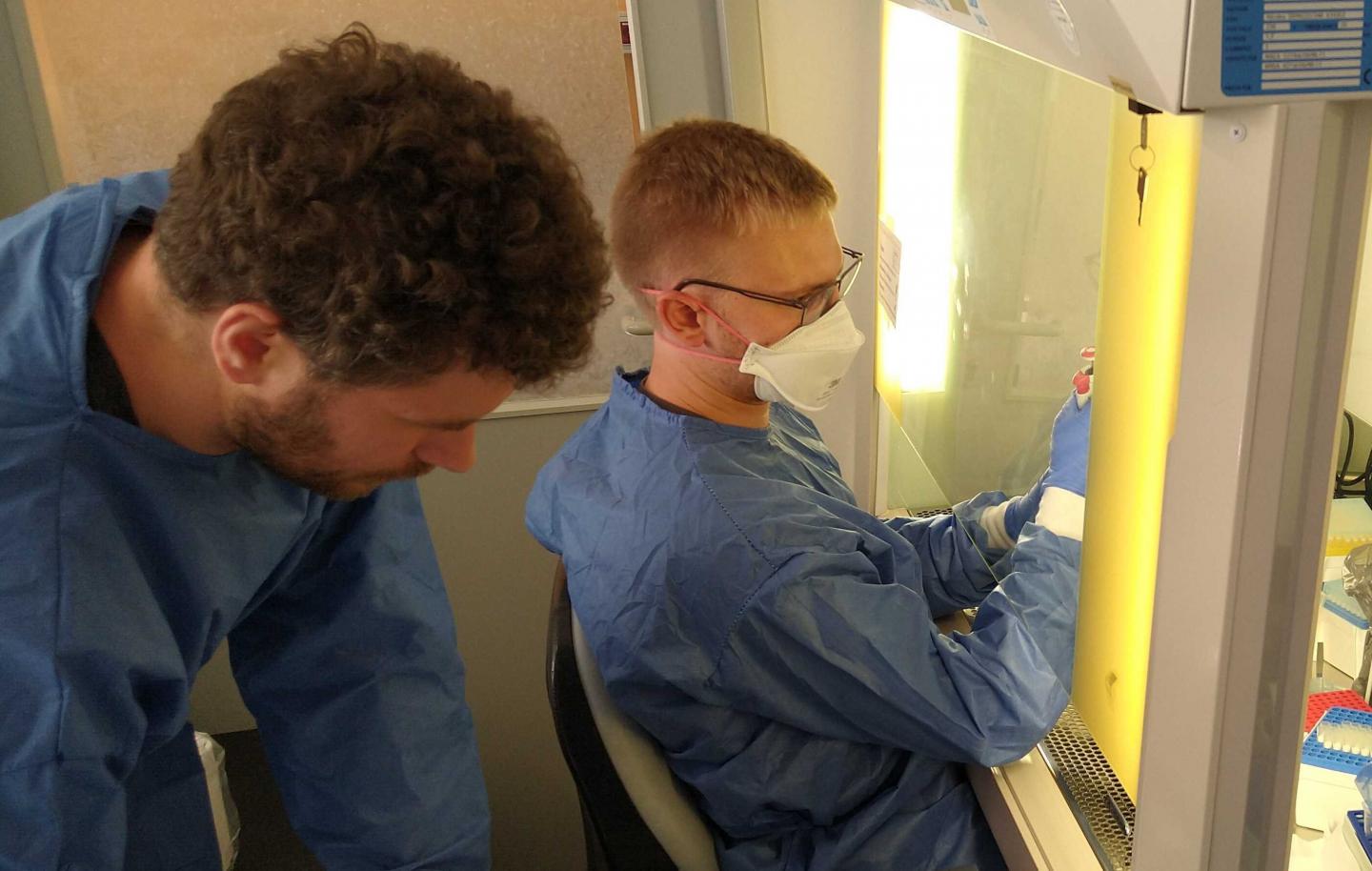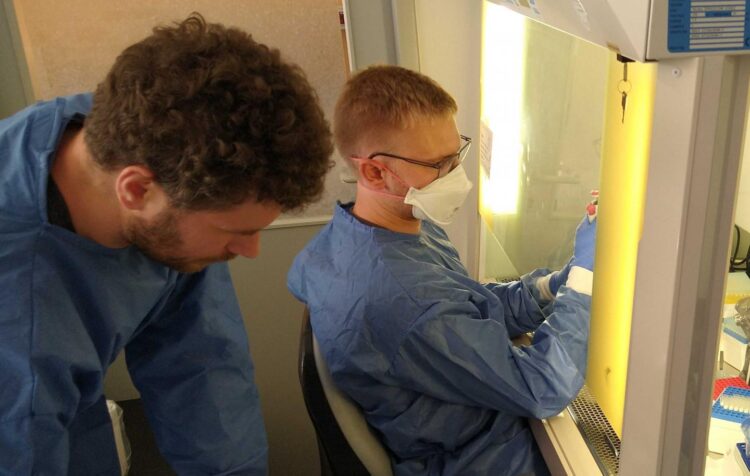Researchers develop a low-cost and fast method to detect a COVID-19 infection from a pool of gargle lavage samples

Credit: MPI f. Evolutionary Anthropology
Quantitative real-time polymerase chain reaction (qPCR) is the most widely used diagnostic method to detect RNA viruses such as SARS-CoV-2. However, it requires expensive laboratory equipment and global shortages of reagents for RNA purification has increased the need to find simple but reliable alternatives. One alternative to the qPCR technology is RT-LAMP (reverse transcription loop-mediated isothermal amplification). This test amplifies the desired target sequences of the virus at a constant temperature, using minimal equipment compared to qPCR. In 2020, it was adapted to the detection of SARS-CoV-2. It was also shown that instead of a swab, which many people find unpleasant, it can be performed on gargle lavage samples.
First author Lukas Bokelmann and colleagues have now developed an improved colorimetric RT-LAMP assay, called Cap-iLAMP (capture and improved loop-mediated isothermal amplification), which extracts and concentrates viral RNA from a pool of gargle lavage samples. After a short incubation, the test result – orange/red for negative, bright yellow for positive – can be interpreted visually or by using a freely available smartphone app.
The improved testing method outperforms previous similar methods. “Cap-iLAMP drastically reduces false positives and single infected samples can be detected in a pool among 25 uninfected samples, thus reducing the technical cost per test to only about 1 Euro per individual”, says senior author Stephan Riesenberg, a researcher at the Max Planck Institute for Evolutionary Anthropology. “Our method overcomes problems associated with standard RT-LAMP and could also be applied to numerous other pathogens.”
###
Original publication:
Lukas Bokelmann, Olaf Nickel, Tomislav Maricic, Svante Pääbo, Matthias Meyer, Stephan Borte, and Stephan Riesenberg
Point-of-care bulk testing for SARS-CoV-2 by combining hybridization capture with improved colorimetric LAMP
Nature Communications, 5 March 2021
Contact:
Lukas Bokelmann
Max Planck Institute for Evolutionary Anthropology, Leipzig
+49 341 3550-545
[email protected]
Dr. Stephan Riesenberg
Max Planck Institute for Evolutionary Anthropology, Leipzig
+49 341 3550-519
[email protected]
Media Contact
Sandra Jacob
[email protected]
Related Journal Article
http://dx.





